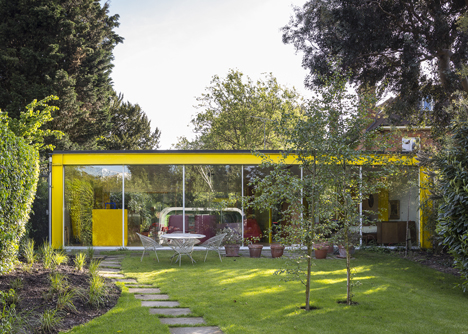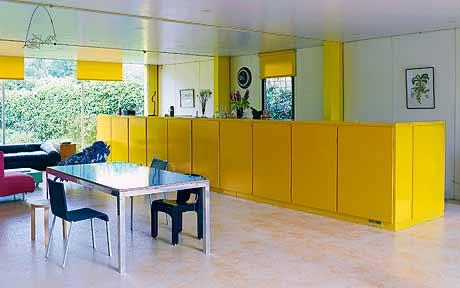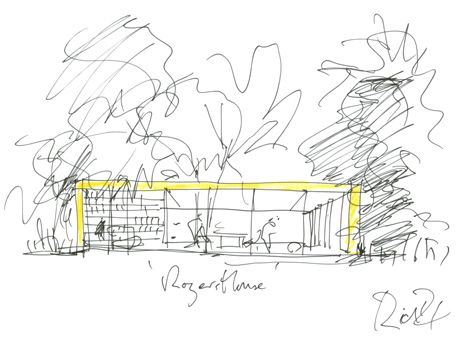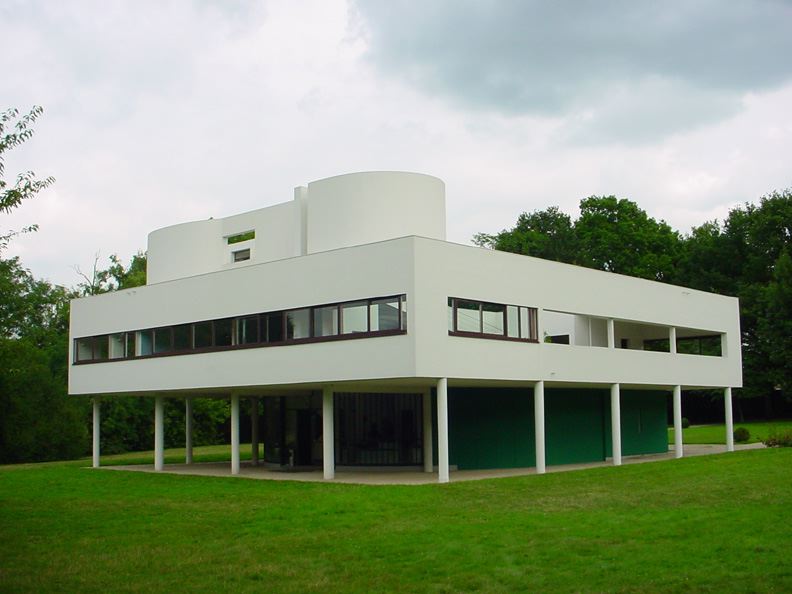Continuing my occasional series of posts about buildings that inspire me: The Wimbledon House was designed by the English architect Richard Rogers with his then wife, Su Rogers, for his parents. Design started in 1967 and was completed in 1969. It is located just outside of London.
Considered by many the most important modern house in the United Kingdom, the house was considered radical in it’s day. It is conceived of as a pavilion, free standing on the site. The building opens up both to the street, and to the private garden in the back.

The house has three bedrooms and a great room, designed with demountable walls so that all but the bathrooms and kitchen can be reconfigured. Later, a second building, with two additional bedrooms was added in the back garden.
I like this house for it’s generous use of glass, creating a strong connection to the out of doors. I also like the simple forms and the bold use of color.

The house was recently donated to the Harvard Graduate School of Design, Richard Rogers is one of the most important English architects of the last century. Along with Norman Foster, he designed some iconic industrial buildings. With Renzo Piano he designed the Centre Pompidous in Paris. He has designed many other notable buildings in his own practice and hasn’t designed residential projects in decades. This early project shows how the “high tech” style can be adapted quite comfortably to residential design.





